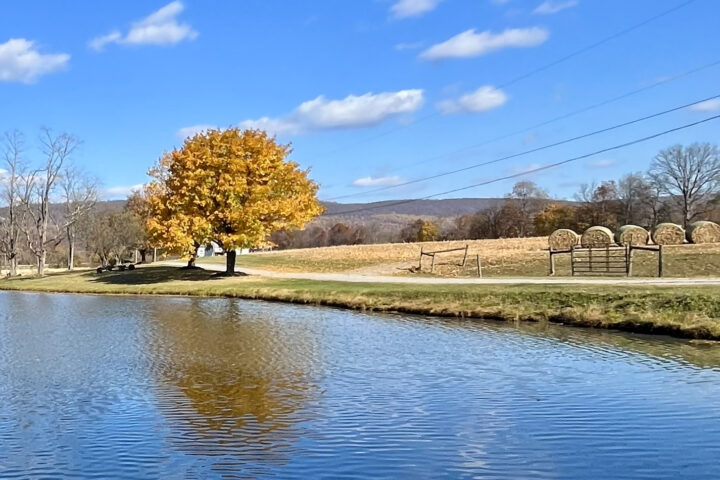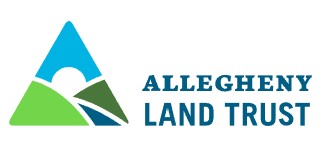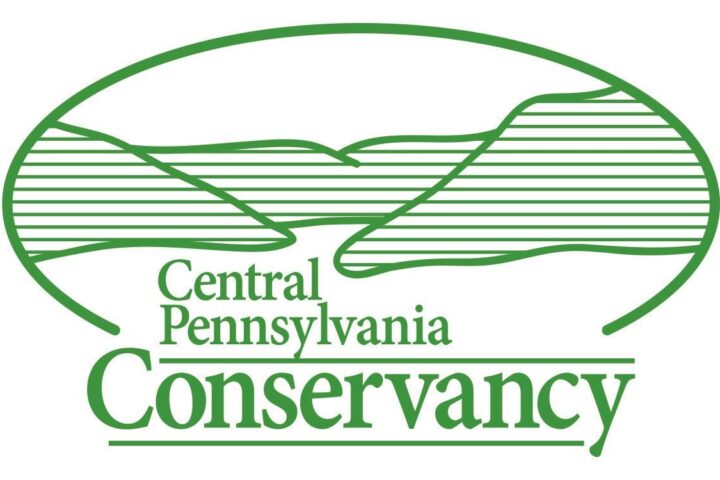News release shared by Western Pennsylvania Conservancy, May 31, 2024. Photo courtesy of Western Pennsylvania Conservancy.
The Western Pennsylvania Conservancy announced today the permanent protection of 250 forested acres along Deer Creek Road in Frenchcreek Township, Venango County, that will soon be open to the public as a new nature preserve.
This property, now known as French Creek Hemlocks Natural Area, is a mix of forest and wetlands, and has more than one mile of frontage on French Creek. Located within a forested landscape, the property hosts many tall and mature American beech, red maple, white pine and Eastern hemlock trees with significant canopies. This cover helps limit sunlight to the forest floor, while helping to cool and regulate the temperature of the creek. The natural area’s wetlands provide floodplain protection and erosion control, which contribute to improved water quality and aquatic habitat important for the variety of fish, freshwater mussels and other aquatic species found at this site.
 The Conservancy will manage this natural area for outdoor recreation that includes hiking, birding, hunting, wildlife watching, nature study and research. The new preserve will also provide one of only a few public fishing access locations along French Creek in the county. The Conservancy will soon make public-friendly improvements to the preserve before inviting the public to explore the area.
The Conservancy will manage this natural area for outdoor recreation that includes hiking, birding, hunting, wildlife watching, nature study and research. The new preserve will also provide one of only a few public fishing access locations along French Creek in the county. The Conservancy will soon make public-friendly improvements to the preserve before inviting the public to explore the area.
French Creek and its tributaries are documented as having the highest aquatic biodiversity of any stream of its size in Pennsylvania and all states to the northeast of Pennsylvania. French Creek and its tributaries provide habitat for six species of federally endangered and threatened freshwater mussels and other mussel species, as well as numerous fish species of greatest conservation need in Pennsylvania. The watershed has been an important area of conservation focus for the Conservancy since 1969. Since that time, the Conservancy has protected more than 6,000 acres there.
Protecting the land around French Creek has also been important to Gretchen Augustyn, who grew up near the creek in Mercer County and, along with her sister, still owns their family property. She donated funds necessary to help steward this newly acquired property in memory of her father, Richard J. Freni, who loved to fish French Creek and did so for more than 60 years. “It was my dad’s favorite fishing spot,” Augustyn, who now lives in California, fondly recalls. “I am delighted that the Conservancy was able to purchase the property and happy that the public will be able to enjoy the area just as my family did for many years,” she adds.
Her donation provided the funds needed for the removal of an existing structure and invasive plants, and the implementation of public access improvements including a new trail, parking lot and signage. Funding to protect the land for this new preserve was made possible thanks to a U.S. Fish and Wildlife Service North American Wetlands Conservation Act (NAWCA) grant, and private donations from Conservancy members, including a gift in memory of Bradford Barnes.
Media Contact:
Carmen Bray
Senior Director of Communications
412-586-2358, work
[email protected]
The Western Pennsylvania Conservancy (WPC) enhances the region by protecting and restoring exceptional places. A private nonprofit conservation organization founded in 1932, WPC has helped establish 11 state parks, conserved more than 285,000 acres of natural lands, protected or restored more than 3,000 miles of rivers and streams, and assessed thousands of wildlife species and their habitats. The Conservancy owns and operates Frank Lloyd Wright’s Fallingwater, which is on the UNESCO World Heritage List and symbolizes people living in harmony with nature. In addition, WPC enriches our region’s cities and towns through 130 community gardens and other green spaces and thousands of trees that are planted with the help of more than 7,000 volunteers. The work of the Conservancy is accomplished through the support of more than 10,000 members. For more information, visit WaterLandLife.org or Fallingwater.org.




